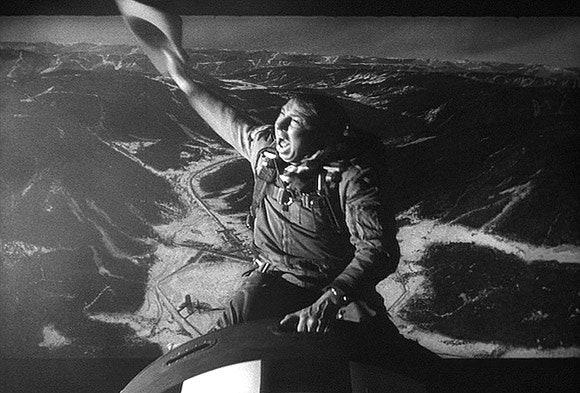In the rain-soaked streets of a dystopian Los Angeles, a weary detective named Rick Deckard hunts rogue androids, blurring the lines between human and machine. When “Blade Runner” first graced the silver screen in 1982, it was met with a lukewarm reception, its future-noir aesthetic and philosophical musings seemingly lost on audiences and critics alike. Yet, like the neon glow of its iconic skyline, the film’s allure only intensified over time. As the years rolled on, “Blade Runner” transcended its initial reception, evolving into a cult classic that reshaped the landscape of science fiction. This transformation was not merely a resurgence of interest, but a testament to its visionary storytelling and profound impact on the genre. In exploring how “Blade Runner” became a touchstone for sci-fi enthusiasts, we uncover a narrative as complex and compelling as the film itself—one that speaks to the enduring power of cinema to capture the imagination and provoke timeless contemplation.
The Visionary Worldbuilding of Ridley Scott
Ridley Scott’s cinematic masterpiece stands as a testament to his unparalleled ability to craft immersive universes that linger in the collective imagination. His intricate attention to detail and innovative visual storytelling have transformed the film into a quintessential piece of science fiction. The dystopian Los Angeles depicted in the movie is not merely a backdrop but a living, breathing entity that plays a crucial role in the narrative. Through a masterful blend of neon-lit streets, towering skyscrapers, and perpetual rain, Scott created a world that feels simultaneously futuristic and hauntingly familiar.
What sets this film apart is its rich tapestry of thematic elements woven seamlessly into the visual narrative. Scott explores profound questions about humanity, identity, and existence, which resonate deeply with audiences. Key aspects of this worldbuilding include:
- Advanced yet decaying technology: A juxtaposition of futuristic advancements with urban decay.
- Multicultural influences: A melting pot of cultures reflected in the architecture, language, and fashion.
- Philosophical depth: Themes of artificial intelligence and the essence of being human.
These elements collectively contribute to the film’s enduring status as a cult classic, inspiring countless filmmakers and creators across various media.

A Deep Dive into the Films Complex Characters
One of the key elements that solidified Blade Runner‘s status as a cult classic is its rich tapestry of complex characters, each meticulously crafted to challenge our perception of humanity and morality. At the heart of this narrative is Rick Deckard, a weary and disillusioned blade runner whose journey from detachment to introspection captivates audiences. His interactions with the enigmatic Rachael, a replicant with implanted memories, blur the lines between human and machine, love and manipulation. Rachael’s struggle for identity and recognition evokes empathy, urging viewers to question the very nature of consciousness.
- Roy Batty, the charismatic yet brutal replicant leader, embodies the film’s exploration of existential angst and the quest for meaning in a predetermined life span.
- Pris, the “basic pleasure model,” is more than a mere object of desire; her survival instincts and vulnerability expose the harsh realities of exploitation.
- J.F. Sebastian, the lonely genetic designer, illustrates the theme of isolation, reflecting the desolate urban landscape of the future.
These characters, interwoven with layers of philosophical inquiry and emotional depth, transcend the typical archetypes found in science fiction. Their narratives compel viewers to engage with profound questions about identity, agency, and the essence of life itself, ensuring that Blade Runner remains an enduring masterpiece in the genre.

The Impact of Vangelis Score on Atmosphere
The hauntingly beautiful score by Vangelis is undeniably a cornerstone in crafting the unique atmosphere of Blade Runner. This ambient soundscape elevates the film from a mere visual spectacle to an immersive experience that lingers in the viewer’s mind. Vangelis employs a fusion of synthesized and orchestral elements to evoke a sense of melancholic futurism, enhancing the film’s exploration of human and technological themes.
- Synthesized Melodies: The use of synthesizers creates an otherworldly ambiance, perfectly mirroring the dystopian cityscape.
- Emotional Resonance: The music adds depth to the emotional arcs of the characters, amplifying the narrative’s poignancy.
- Timeless Quality: Despite its futuristic setting, the score remains timeless, resonating with audiences across decades.
Through these meticulously crafted compositions, Vangelis not only complements the film’s visual storytelling but also invites viewers to ponder the intricate layers of the human condition, leaving an indelible mark on the legacy of sci-fi cinema.

Understanding Blade Runners Enduring Influence on Sci-Fi
When Blade Runner premiered in 1982, it did not just present a visually stunning dystopian future; it redefined the aesthetics and narrative depth of science fiction. The film’s influence on the genre is multifaceted, manifesting in both visual and thematic elements that have permeated countless subsequent works. A significant aspect of its impact lies in its groundbreaking visual design. The gritty, neon-lit streets of Los Angeles, drenched in perpetual rain and cloaked in shadows, introduced audiences to a world that was both alien and eerily familiar. This aesthetic has since become a staple in sci-fi cinema, inspiring films such as The Matrix and Ghost in the Shell.
Beyond its visual prowess, Blade Runner also delves into profound philosophical questions, which have left a lasting mark on the genre. Themes of identity, humanity, and the ethics of artificial intelligence are explored through the interactions between humans and replicants. This thematic complexity encourages viewers to ponder the nature of consciousness and morality, a trend that has been echoed in later works like Ex Machina and the TV series Westworld. Its influence is further amplified by its iconic soundtrack, composed by Vangelis, which combines electronic music with orchestral elements to create an atmosphere that is both haunting and beautiful.
- Visual Influence: Neo-noir aesthetic, urban decay, cyberpunk elements.
- Thematic Depth: Identity, humanity, AI ethics.
- Musical Impact: Electronic and orchestral fusion.









